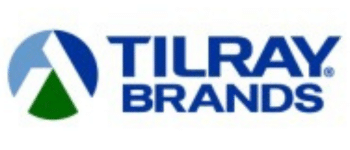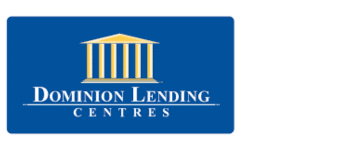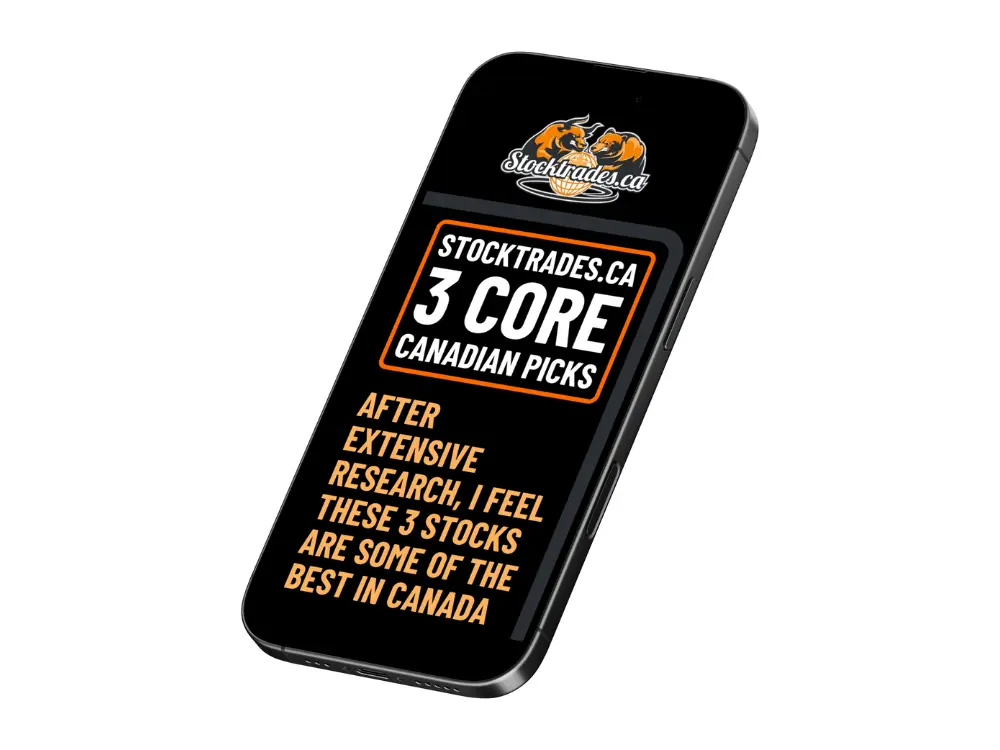Day Trading – Not For The Faint Of Heart. But for Those That Still Venture in Despite the Risks, Here is Some Additional Research
Key takeaways
Volatility is Key – The best day trading stocks in Canada tend to be highly volatile, with rapid price movements driven by market trends, news catalysts, and sector developments.
Liquidity Matters – High trading volume is essential for day traders, as it allows for quick entries and exits without major price slippage. Stocks like crypto miners, tech firms, and resource companies often fit this profile.
External Factors Drive Price Action – Many top day trading stocks are heavily influenced by external events such as commodity prices, interest rate changes, regulatory shifts, and macroeconomic trends, creating opportunities for traders who stay informed.
3 stocks I like better than the ones on this list.For many new investors or folks who prefer not to stick with the “buy-and-hold” approach, **”day trading”** ranks as the favorite stock market strategy.
Those who day trade stocks, an extremely speculative strategy, look to enter and exit positions using highly volatile stocks within the same day. Day traders never hold positions, at least the ones they are day trading, that is, overnight.
Predicting these short-term movements in a particular Canadian stocks or the stock market with any accuracy is something that most investors will not be successful at doing.
Around 90% of investors that attempt to day trade will fail. There is a 1 in 10 chance of either breaking even or being profitable over the long term.
It is often said that the only people who truly benefit from investors’ day trading are the trading platforms, as they rake in trading fees daily.
But, some people can scrape out solid profits day trading over the long term. Although it is difficult, it is possible.
In this article, we will go over some of the best day trading stocks in Canada.
Bitcoin Mining Pure Play
Bitfarms (TSE:BITF)

Bitfarms is a cryptocurrency mining company focused on Bitcoin, operating large-scale mining facilities powered by renewable energy. The company benefits from Bitcoin’s price movements, making it a high-volatility stock that attracts day traders looking for quick gains.
P/E: –
5 Yr Revenue Growth: 42.9%
5 Yr Earnings Growth: -%
5 Yr Dividend Growth: -%
Yield: -%
Bitcoin Mining & AI Compute
Hut 8 Corp (TSE:HUT)

Hut 8 is another Bitcoin mining powerhouse, but with a twist—it has pivoted towards AI computing, leveraging its data center infrastructure for additional revenue streams.
P/E: 3.9
5 Yr Revenue Growth: -%
5 Yr Earnings Growth: -%
5 Yr Dividend Growth: -%
Yield: -%
Cannabis & Consumer Goods Hybrid
Tilray Brands (TSE:TLRY)

Tilray is one of the largest cannabis companies in the world, with operations in both recreational and medical marijuana. It’s also expanding into beer and wellness products to diversify revenue.
P/E: –
5 Yr Revenue Growth: 34.5%
5 Yr Earnings Growth: -%
5 Yr Dividend Growth: -%
Yield: -%
E-Commerce & POS Solutions
Lightspeed Commerce (TSE:LSPD)

Lightspeed provides point-of-sale (POS) and e-commerce solutions for businesses, competing with Shopify and Square.
P/E: –
5 Yr Revenue Growth: 63.7%
5 Yr Earnings Growth: -%
5 Yr Dividend Growth: -%
Yield: -%
Related
Best Canadian Growth ETFs

Cyclical Lumber Producer
Interfor Corp (TSE:IFP)

Interfor is one of the largest lumber producers in North America, operating sawmills across Canada and the U.S. Its stock is highly reactive to lumber prices, making it an attractive target for traders seeking short-term moves.
P/E: –
5 Yr Revenue Growth: 10.0%
5 Yr Earnings Growth: -%
5 Yr Dividend Growth: -%
Yield: -%
Powersports Vehicle Manufacturer
BRP Inc (TSE:DOO)

BRP is a leading manufacturer of recreational vehicles, including snowmobiles, ATVs, and personal watercraft under brands like Ski-Doo and Sea-Doo.
P/E: –
5 Yr Revenue Growth: 5.3%
5 Yr Earnings Growth: -%
5 Yr Dividend Growth: 16.0%
Yield: 1.8%
Digital Advertising Tech Firm
Illumin Holdings (TSE:ILLM)

Illumin Holdings provides programmatic advertising technology that helps businesses automate and optimize their digital ad campaigns.
P/E: 100.0
5 Yr Revenue Growth: 3.3%
5 Yr Earnings Growth: -%
5 Yr Dividend Growth: -%
Yield: -%
Fintech Lending Platform
Propel Holdings (TSE:PRL)

Propel Holdings operates an online lending platform, offering personal loans to underserved borrowers.
P/E: 17.5
5 Yr Revenue Growth: 46.0%
5 Yr Earnings Growth: 83.9%
5 Yr Dividend Growth: -%
Yield: 2.0%
Mortgage Brokerage Network
Dominion Lending Centers (TSE:DLCG)

Dominion Lending Centers operates Canada’s largest mortgage brokerage network, connecting borrowers with lenders.
P/E: –
5 Yr Revenue Growth: 11.3%
5 Yr Earnings Growth: -%
5 Yr Dividend Growth: -%
Yield: 1.5%
Oil & Gas Exploration Firm
Whitecap Resources (TSE:WCP)

Whitecap Resources is a Canadian energy company focused on oil and natural gas production.
P/E: 5.1
5 Yr Revenue Growth: 22.0%
5 Yr Earnings Growth: -%
5 Yr Dividend Growth: 16.8%
Yield: 9.3%
What Makes a Stock Suitable for Day Trading?
Because we want to profit off daily fluctuations in equity prices, for the most part, we need highly volatile equities to take advantage of swings in price, along with high-volume stocks. If the asset we are day trading doesn’t move much in a day, we will either need to invest larger sums of money or be willing to accept lower profits.
For example, day trading a regulated utility stock like Fortis, or a bond, would produce minimal swings in price. Whereas trading the most volatile stocks, like a high-beta tech stock or a penny stock, where you could see 5%+ swings in a single day, could lead to more significant profits.
A stock doesn’t necessarily need to be small to be a good candidate for day-trading, either. In fact, Tesla Inc, which trades under the ticker TSLA on the NASDAQ, has been a perfect candidate for day trading for years.
Keep in mind, you could also look to trade an exchange-traded fund. You’d simply look for ETFs that have volatile underlying holdings or are possibly leveraged to the index.
Understanding the Risks of Day Trading
Before we get into the top day trading stocks here in Canada, we first have to highlight the risks of day trading and some steps you can take to mitigate your potential losses.
As mentioned, most people will be unsuccessful at day trading. It is critical that you set aside only a small portion of your overall portfolio for this type of speculative investing, and you have the right equipment to succeed. Stick to strict guidelines as to what you’re willing to lose.
If you’re trading on margin or trading uncovered options contracts, you can lose more than what you’ve set aside. It is crucial to always understand the impacts of leverage on your portfolio.
Another risk to consider is one of the tax-man if you plan to day trade inside of your Tax-Free Savings Account (TFSA). Just know that this is not allowed, and if the CRA catches on, you may be forced to pay taxes on your earnings. As such, day traded items are unlikely to be the best stocks for your TFSA.
Taxes When it Comes to Day Trading
Many Canadians make the mistake of thinking that their taxes on day trading profits will come in the form of capital gains tax. However, if you’re day trading, the Canada Revenue Agency will likely deem your profits as business income.
Before you start day trading here in Canada, contact an accountant and figure out the best setup for you. If your day trading qualifies as a business, you may also be eligible to write off business expenses. This can include interest paid on borrowed money in margin accounts.
What are the Best Brokerages for Day Trading in Canada?
If you’re looking to start day trading, you need to find a way to reduce fees. Commissions paid on trading can eat into your overall profits. For this reason, we’d highly suggest utilizing a commission-free brokerage like Wealthsimple Trade.
The only difficulty with Wealthsimple is the platform is a simple, no-frills online brokerage and has a fairly simple mobile app.
With day trading, you may need an online broker that gives you access to charting platforms to execute technical analysis.
Suppose you’re looking for something with more advanced tools and relatively cheap commissions (although not free). In that case, Interactive Brokers is a great place to start. The brokerage has many more trading tools and is one of the best day trading platforms available.
That isn’t to say you can’t trade stocks with RBC Direct Investing, CIBC Investor’s Edge, Qtrade, Scotia iTrade, TD Direct Investing, Questrade, or any of the other major brokerages here in Canada. It’s important to weigh all options to find the best online broker for your specific trading needs.
Related
Top Canadian Value Stocks to Buy

What are the Most Popular Day Trading Strategies?
- Trading the news
- Breakout trading
- Momentum trading
- Reverse momentum trading
- Trading pairs
- Pivot point trading
This is far from an extensive guidance on day trading strategies. If you want to learn more, your best bet is to research each strategy. This list is meant to help you save some time in identifying various methods.
How Much do Day Traders Make per day?
If you are going to be successful at day trading, the size of your account determines how much you can make.
Let’s assume a successful day trader can average 4-5% monthly returns on their money. In that case, a $100,000 account balance would net the trader around $60,000 a year. A $200,000 account balance? Around $120,000 a year.
Remember that these numbers are just estimates and before commissions, taxes, and other fees.
Despite what many gurus will try and tell you, the vast majority of day traders will make nowhere near 4-5% returns on their money in a month.
What Percentage of Day Traders are Successful?
Only around 10% of day traders avoid losing money over the long term. This produces around a 90% failure rate. It is essential to understand that financial gurus and day trading “experts” will often tell you the majority of their students earn money.
This is factually inaccurate, often disproven in a “results not typical” disclaimer. If you’re going to day trade, you must do so with a level head and the acceptance that you will likely fail.
Is Trading Penny Stocks Worth it?
Penny stocks often have low floats and smaller volumes. They can be manipulated much easier than a stock trading on the Toronto Stock Exchange. As such, they are perfect candidates for trading.
However, Canadian penny stocks do not have the same regulatory requirements as companies listed on larger exchanges such as the TSX. Due to this, penny stocks are prone to excessive scams and manipulation.
Is Day Trading Profitable Right Now?
Day trading can be profitable for those who take it seriously. Success will require 40+ hours a week of research, studying, and building knowledge. Be cautious of anyone who tells you they make a living trading a few hours per week. They are more than likely trying to sell you something.
Day trading is ultimately easier in “easy” markets like we witnessed in 2020 and 2021. During a bear market, a recession, or even normalized market conditions, profitability is still possible but certainly harder to achieve.
What are the Safest Stocks to Day Trade?
It is important to note that there is no “safe” option for day trading. Day trading poses significant risks to capital. It is vital that day trading is limited to only a tiny portion of your investment portfolio. However, there are “safer” options, and that would be large-cap companies with lower overall volatility.
If we compare a large-cap stock to a meme stock, penny stock, or small-cap stock with significant volatility, you are likely to see fewer swings in price. Although your upside is likely capped by trading larger stocks, you also have some degree of downside protection.

